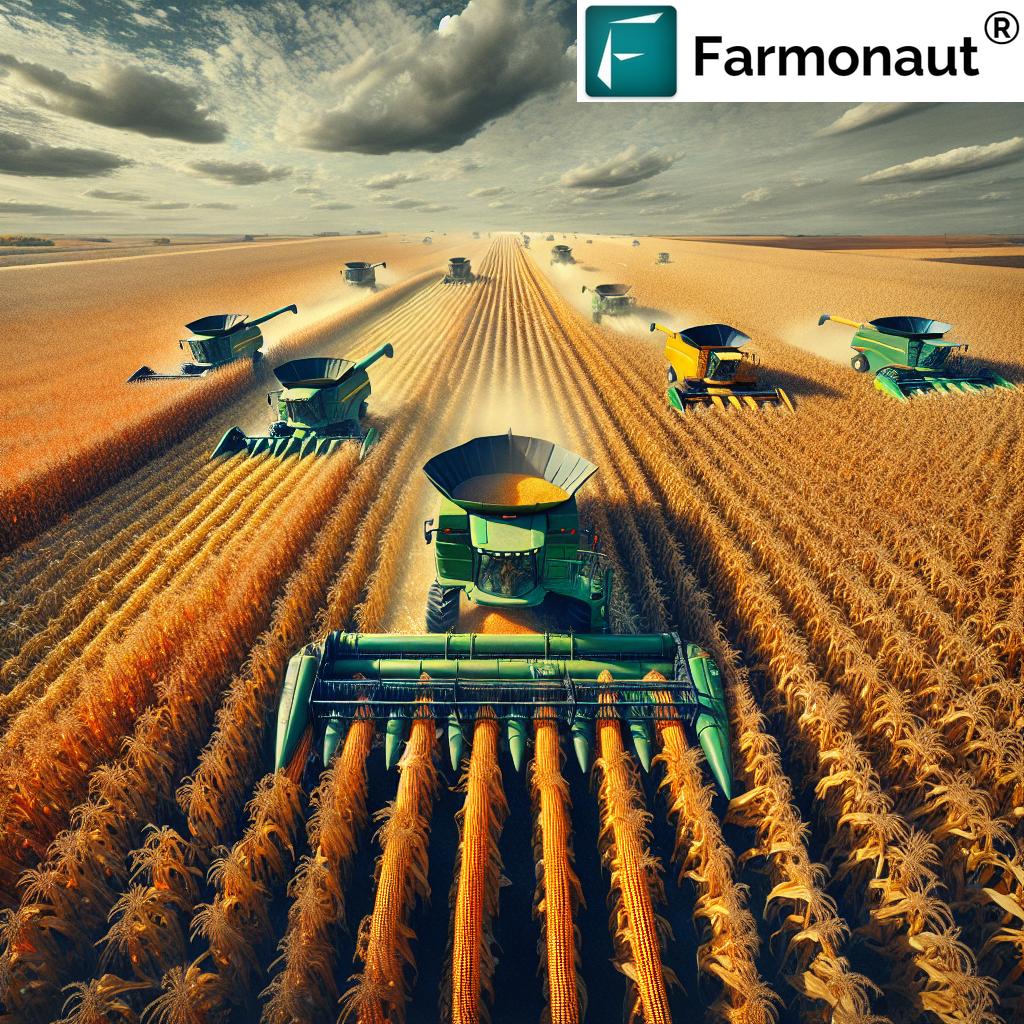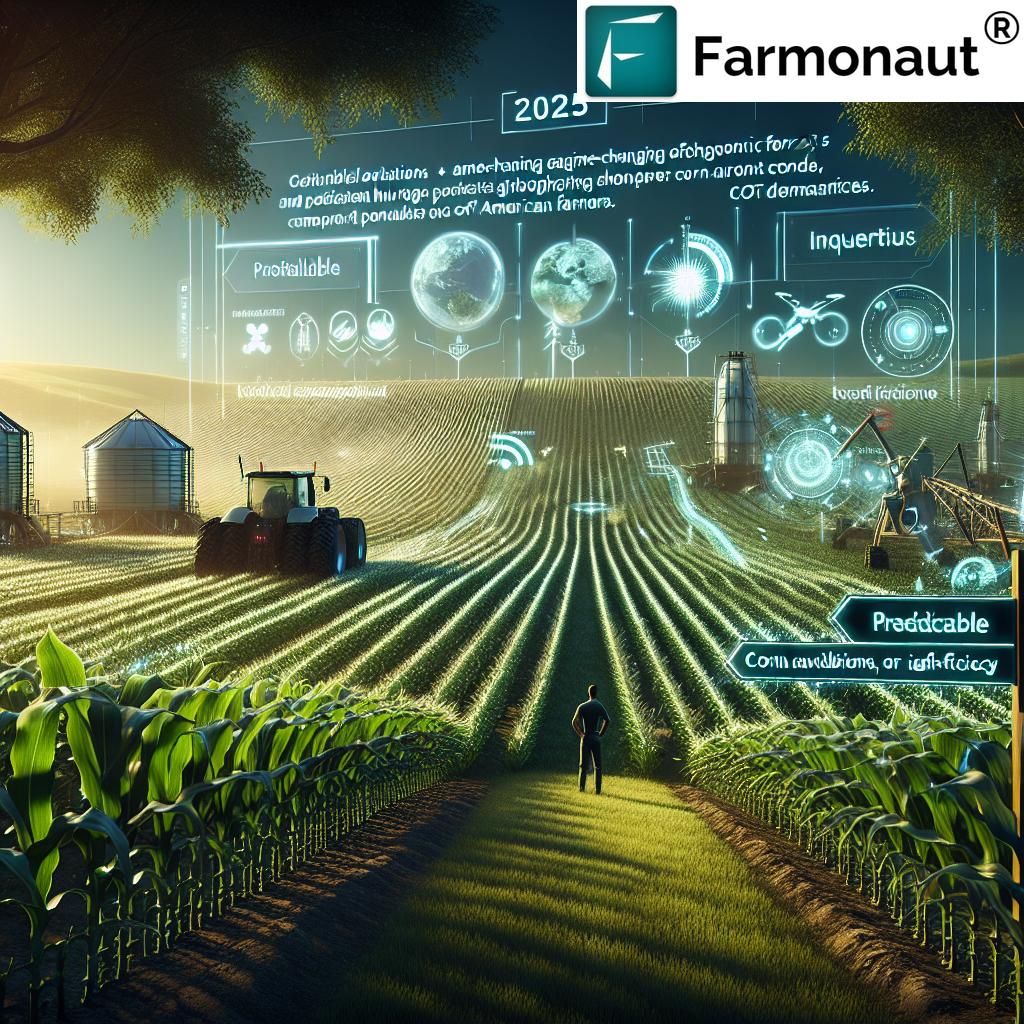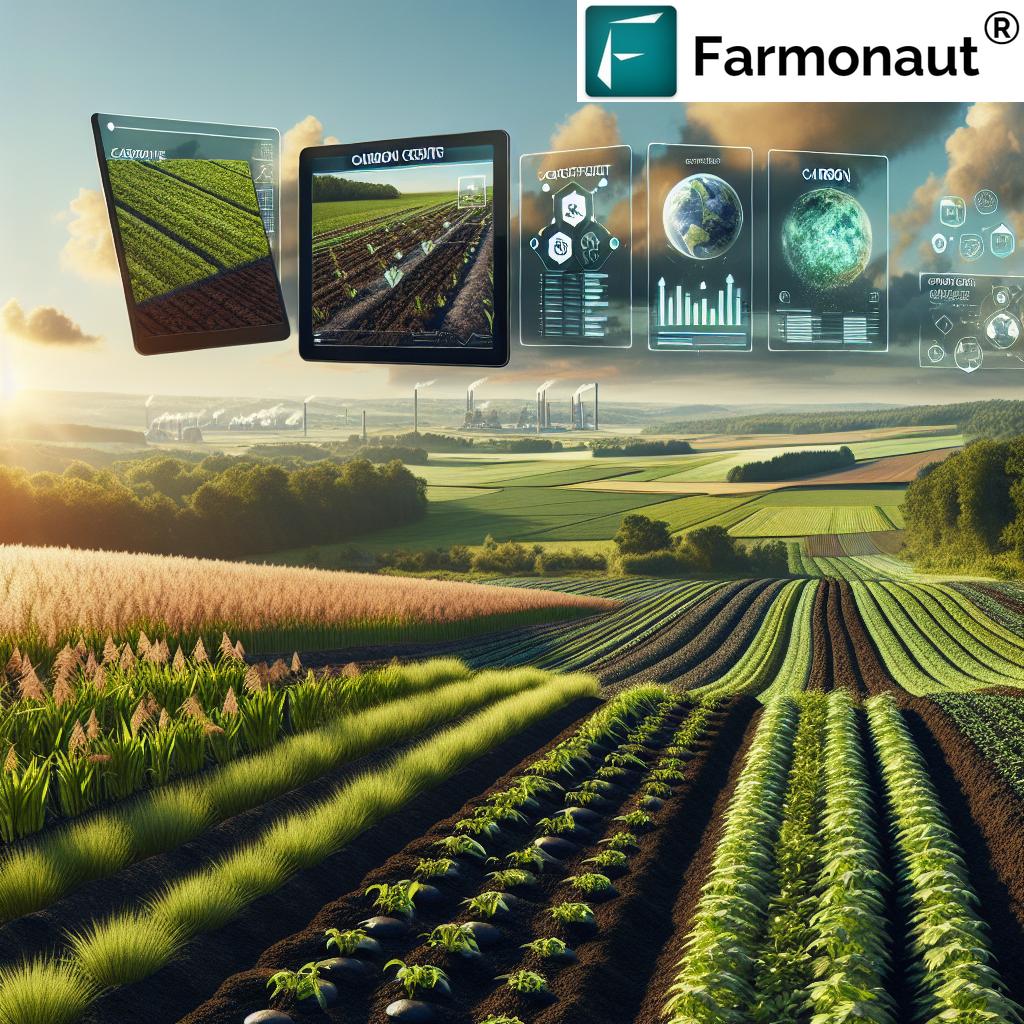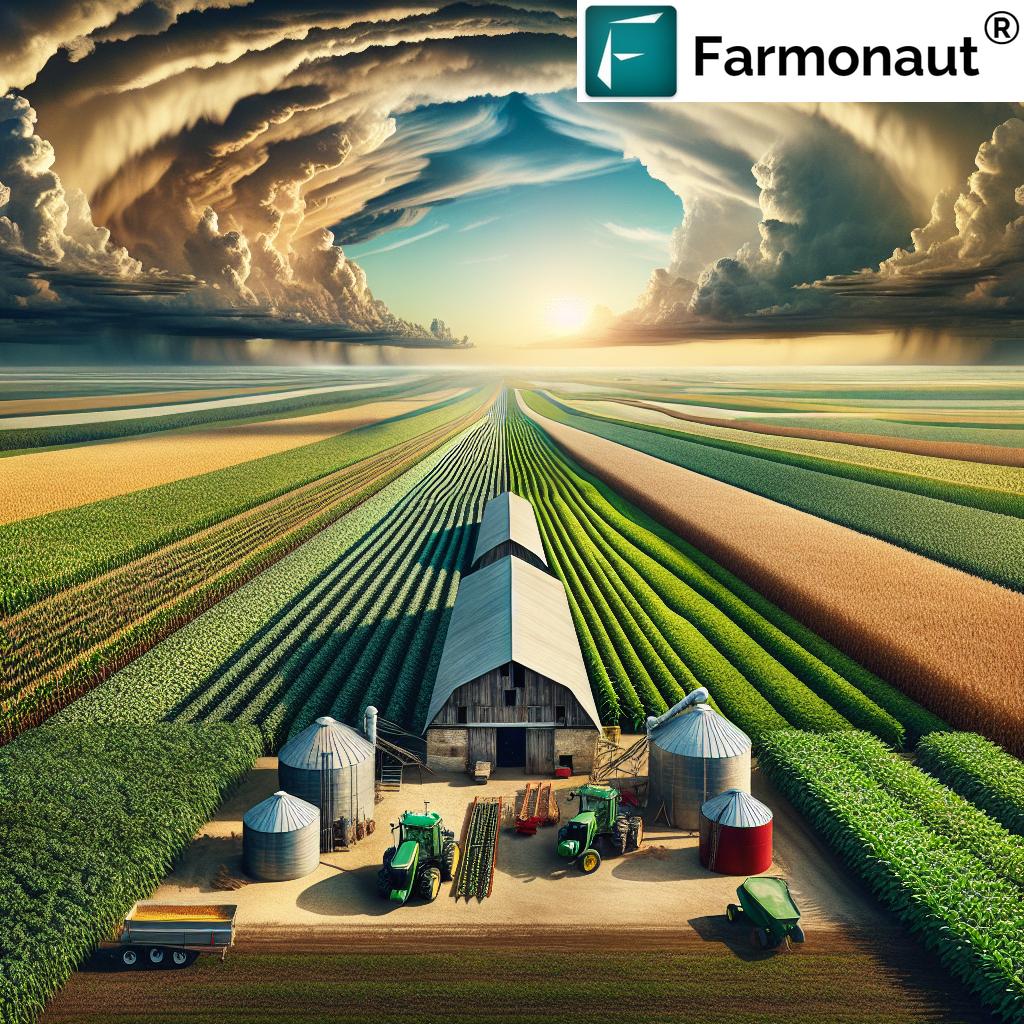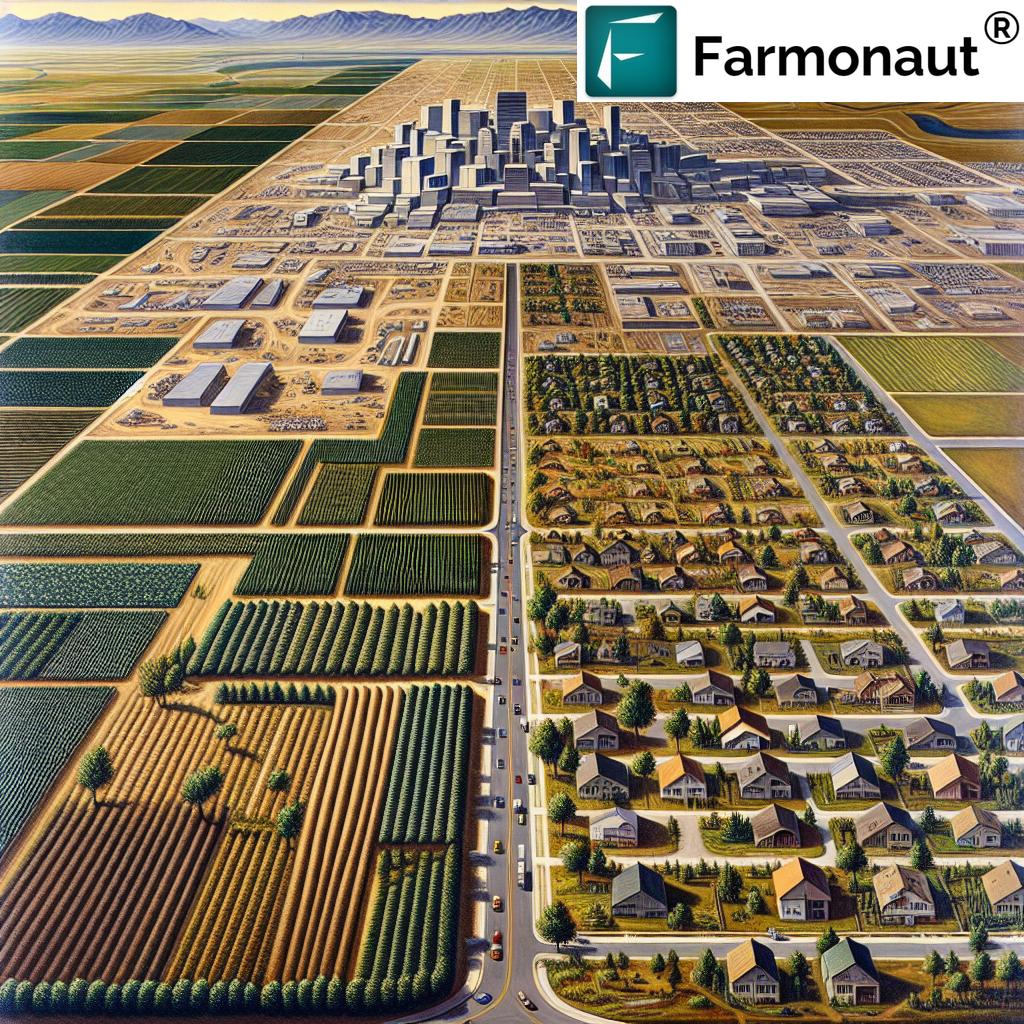Corn Harvest USA: Shocking 2025 Trends Boost Yields!
Table of Contents
- Overview of Corn Production in the U.S.
- The Corn Harvest Cycle: Understanding the Process
- Weather’s Impact on Corn Harvest Yields, 2025
- Technological Advancements in Corn Farming
- Corn Crop Challenges: Navigating the 2025 Season
- Corn Supply, Demand, and Market Dynamics
- Comparative Trends Table: U.S. Corn Harvest 2022-2025
- Farmonaut: Catalyzing Innovation in U.S. Corn Production
- Conclusion: Corn Harvest 2025 and Beyond
- Corn Harvest USA 2025: FAQs
“U.S. corn yields are projected to rise by 8% in 2025 due to advanced weather prediction technologies.”
Overview of Corn Production in the U.S.
Corn has long stood as the cornerstone of American agriculture, with the United States maintaining its title as the world’s largest producer and exporter of corn. As a critical component for food, livestock feed, and various industrial products, U.S. corn production drives not only our national economy but also global markets. The upcoming corn harvest 2025 is expected to set new standards, as projected by the U.S. Department of Agriculture (USDA).
According to the latest USDA reports, the 2025-2026 season is on course for a record corn yield of 181 bushels per acre, leading to an estimated production of 15.82 billion bushels. This anticipated bumper crop is largely contingent upon favorable weather conditions, effective farming practices, and technological advancements that continue to revolutionize modern agriculture.
However, even amidst such projected abundance, global corn supplies are forecasted to dip to a 12-year low, with ending stocks estimated at 277.8 million metric tons—a sharp drop of 16% from the previous season. This curious paradox arises due to increased demand and stiff competition from other major producers like Brazil (Source).
The U.S. corn industry’s sheer scale in acreage—over 90 million acres are projected to be harvested in 2025—cements the crop’s role in both domestic food security and its impact on global trade.
Key Focus in This Guide
- Corn harvest 2025: Trends, records, and the evolving significance for the economy and markets
- U.S. corn production: Spectacular growth, scale, and global market influence
- Technological advancements in corn farming: How innovation is maximizing yields
- Impact of weather on corn yields: The double-edged sword of weather events in 2025
- Corn crop challenges: Navigating through low prices, labor issues, and climate change
- Corn supply and demand: Market dynamics shaping prices and trade
The Corn Harvest Cycle: Understanding the Process
The corn harvest cycle in the United States is an intricate, months-long process, influenced by a multitude of factors—from initial seed selection to the final transportation of the harvested crop.
Key Phases in the Cycle:
- Planting: Takes place from late April through early May, depending on state-by-state weather patterns, geographic location, and soil conditions.
- Growing Season: The growth period stretches from May through late September, with crop development highly dependent on weather, rainfall, temperatures, and sunlight.
- Harvesting: Peak corn harvesting occurs from late September through November, with timing and efficiency greatly affected by technological advancements, labor availability, and the unpredictability of weather events.
Because every stage is closely intertwined with local weather, the use of modern farm management practices has become pivotal in determining overall yield per acre.
Weather’s Impact on Corn Harvest Yields, 2025
Weather stands as the most pivotal factor determining corn harvest success. In 2025, the impact of weather on corn yields has stunned markets and policymakers alike.
The USDA’s initial crop condition rating shocked the agricultural world: only 68% of the U.S. corn crop was rated in good-to-excellent condition, marking the lowest initial rating since 2019. This rating reflects the disruptive influence of:
- Excessive rainfall, particularly in North Dakota, Ohio, and other Midwestern states
- Abnormally cold temperatures stunting early growth
- Persistent cloudy weather, leading to delayed emergence and lower photosynthesis
These unfavorable conditions have led to concerns over yield reductions in critical states and highlight the ongoing risk that extreme weather events—including floods and droughts—pose for corn production (Source).
As we see in 2025, precise weather prediction and rapid adaptive measures mean the difference between a record-breaking harvest and a disappointing season.
“Over 90 million acres of corn are expected to be harvested in the U.S. in 2025, impacting global trade.”
Technological Advancements in Corn Farming: Maximizing Efficiency and Yield
Technological progress sits at the very core of today’s record-breaking corn harvests. Across U.S. farms, innovation is being harnessed to maximize the corn yield per acre, mitigate the effects of weather volatility, and optimize resource use.
Top Innovations for Corn Harvest 2025:
-
GPS-guided Combines and Yield-Monitoring Systems:
- Modern combines equipped with GPS and sophisticated yield monitors enable precise harvesting, reducing waste and improving real-time farm data collection.
-
Drought-Resistant and Shorter Corn Varieties:
- Development of shorter corn hybrids—capable of withstanding 50 mph winds—offers better resilience against increasing climate change-induced events.
- New genetics allow adaptation to unpredictable weather and potentially higher yields even under adverse conditions (Source).
-
Satellite Remote Sensing and AI:
- Farm management platforms such as Farmonaut utilize multispectral satellite imagery for real-time crop health monitoring (Know More).
- Provides actionable insights on vegetation health, soil moisture, pest risks, and fertilizer optimization—allowing farmers to make data-driven decisions.
-
Blockchain-based Traceability:
- Ensuring transparent, secure supply chains and quality assurance for export and industrial use.
More on Traceability Solutions by Farmonaut.
- Ensuring transparent, secure supply chains and quality assurance for export and industrial use.
These technological advancements in corn farming are rapidly increasing the technological uptake level among U.S. farms, helping them weather the headwinds of 2025.
Corn Crop Challenges: Navigating the 2025 Season
Even amid vast progress, our farmers face significant corn crop challenges during the 2025 harvest season.
Major Obstacles
- Labor Shortages: Persistent difficulties in securing sufficient seasonal workers, especially during crucial harvesting months (September-November).
- Rising Input Costs: Fluctuations in fertilizer and crop protection prices increase pressure on profit margins.
- Extreme Weather Events: Growing unpredictability—ranging from late spring frosts to mid-summer droughts and powerful windstorms—continues to threaten both yield and harvest quality.
- Adapting to Technological Change: Not all farms have kept pace with the adoption of precision agriculture, creating disparities in yield and efficiency.
- Market Uncertainty and Prices: A global environment marked by volatile corn prices, shifting corn supply and demand, and competitive export markets (including from Brazil and Argentina).
Thanks to the development of shorter corn varieties and rapid resource management technologies, farmers are better equipped to navigate these ongoing risks, but the challenges remain significant.
Leveraging AI-based farm advisory systems such as Farmonaut’s Jeevn AI, can offer tailored, real-time advice and help individual farmers and large agribusinesses alike optimize their operations.
More info: Farmonaut Web Platform
Corn Supply, Demand, and Market Dynamics: 2025 Outlook
As the 2025 corn harvest gets underway, global corn market trends are more volatile and complex than ever before. The U.S. remains a critical player both as a producer and major exporter to customers worldwide—especially China, Mexico, and Japan.
What’s Influencing the 2025 Market?
- Massive U.S. Corn Production: An anticipated record-breaking yield per acre (181 bu/acre) may boost total U.S. output to 15.82 billion bushels.
- Global Stock Shortage: Despite high U.S. yields, global corn stocks are expected to plummet to a 12-year low, driving price sensitivity.
- Speculation and Price Fluctuations: In early 2025, over 420,000 corn futures contracts were sold off in Chicago, causing a 10.5% dip in prices between late February and mid-May (Source).
- Trade and Competition: Increased output and lower prices from Brazil and other major corn-exporting countries introduce fierce competition for U.S. farmers.
- External Factors: The ongoing climate crisis, input availability, transportation bottlenecks, and shifting political dynamics influence both domestic and international corn trade.
Corn prices outlook: As our corn harvest progresses, we expect the market to remain highly responsive to weather events, USDA reports, and trade news. Pricing could swing in either direction depending on the remainder of the growing season and global corn supply and demand relationships.
Expanding Export Markets
While the U.S. maintains a solid reputation as a reliable corn export market, producers are increasingly looking to diversify into new global regions to buffer against risks associated with specific trade partners. Improved product traceability and carbon footprint tracking, offered by Farmonaut, can unlock new market access and fulfill evolving consumer and corporate demands for sustainability.
Comparative Trends Table: U.S. Corn Harvest 2022-2025
The following table presents a clear, year-over-year comparison of the most important metrics influencing U.S. corn yields, technology adoption, market prices, and trade volumes.
| Year | Estimated Average Yield (bushels/acre) | Weather Impact Score (1=Extreme Adverse, 5=Favorable) |
Technological Uptake Level (% farms using advanced tech) | Market Price (USD/bushel) |
Export Volume (million tons) |
|---|---|---|---|---|---|
| 2022 | 173 | 3 | 57% | $6.75 | 59 |
| 2023 | 176 | 4 | 65% | $6.10 | 63 |
| 2024 | 178 | 4 | 72% | $5.50 | 66 |
| 2025* (Projected) | 181 | 3 | 77% | $4.95 | 70 |
*2025 values estimated per USDA and industry reports; Weather Impact Score reflects initial ratings as of May–June 2025.
The data captures how weather conditions, adoption of new technologies, and global market dynamics all interact to shape the corn harvest and its broader economic impact.
Farmonaut: Catalyzing Innovation in U.S. Corn Production
In this era of digital transformation, precision agriculture is proving essential for tackling the most difficult corn farming challenges. Farmonaut is committed to democratizing precision agriculture, making it accessible and affordable for farmers of all scales.
How Farmonaut’s Solutions Transform Corn Harvest Outcomes
-
Satellite-Based Crop Health Monitoring:
Enables real-time detection of stress factors in corn fields (NDVI, soil moisture, pest/disease early warning) for actionable, timely interventions. -
Jeevn AI Advisory:
Provides personalized, AI-driven recommendations for maximized crop health, optimal harvest timing, and precise resource allocation. -
Blockchain Product Traceability:
Guarantees transparent farm-to-market tracking, fulfilling demanding requirements of international corn export markets. More about Farmonaut’s Traceability Features -
Resource and Fleet Management:
Allows agribusinesses and cooperatives to streamline logistics, save costs, and maximize field operation efficiency. Read more about Farmonaut Fleet Management -
Carbon Footprinting:
Tracks and minimizes environmental impact while facilitating compliance with global sustainability standards. Know more about our Carbon Footprinting Technology -
Large-scale Farm Management:
Farmonaut lets large farm operators monitor, analyze, and optimize harvests through powerful dashboard interfaces and satellite datasets. See Large-Scale Farm Management Tools -
API Access for Developers & Institutions:
Integrate advanced satellite/weather/crop monitoring data in your own platforms. View our Farmonaut API and see the Developer Docs
Farmers can easily access Farmonaut’s platform both via the web/browser app and dedicated mobile applications for Android and iOS, ensuring real-time farm insights from anywhere.
Try Farmonaut’s Crop Plantation and Forest Advisory Portal
Farmonaut subscriptions are designed for flexibility—choose only the features and field coverage you need, and scale up as your operation grows.
Conclusion: Corn Harvest 2025 and Beyond
As we look forward to the culmination of the 2025 U.S. corn harvest season, it’s clear that a blend of weather, technology, market forces, and adaptive farm management will determine both local and global outcomes. While American farmers face steep corn crop challenges—from unpredictable weather to cost and price pressures—each season brings new innovations and strategies to overcome adversity.
Farmonaut is proud to empower this new era of data-driven, sustainable corn production, and we invite you to explore how our satellite and AI-powered solutions can transform your farming, agribusiness, or research institution—propelling the U.S., American states, and global markets toward ever-greater harvest efficiency and resilience.
Corn Harvest USA 2025: FAQs
What are the projected U.S. corn yields for 2025?
The U.S. Department of Agriculture projects an average yield of 181 bushels per acre nationwide, representing an 8% increase over previous years.
How has the weather affected the 2025 corn crop?
Unfavorable weather conditions—including excessive rain, cold temperatures, and cloudy skies—have led to a lower initial corn crop rating, especially in states like North Dakota and Ohio. The final yield will depend on weather during the rest of the season.
What technological advancements are central to the 2025 corn harvest?
Major advancements include the use of GPS-enabled combines, AI-based farm advisories, and drought-resistant/shorter corn varieties. Satellite-based crop health monitoring and blockchain traceability are also gaining prominence among U.S. growers.
Why are global corn stocks low despite a U.S. bumper crop?
Elevated worldwide demand, increased biofuel production, and competition from Brazil and Argentina mean much of the new supply is quickly absorbed, pushing global ending stocks to 12-year lows.
How can Farmonaut help with corn harvest challenges?
Farmonaut offers precise crop health monitoring, satellite-driven advisory, resource management, and blockchain-backed traceability. These tools enable proactive responses to weather stress, pests, and efficient harvest planning—all while enhancing sustainability and profitability.
Ready to take your corn harvest to the next level? Explore Farmonaut’s Large Farm Management tools, Product Traceability, and Carbon Footprinting Solutions to future-proof your operations.
For more insights on the 2025 U.S. corn harvest, subscribe to updates, or explore how Farmonaut’s advanced farm management solutions can streamline your corn production and secure your place in the evolving global agricultural landscape.


